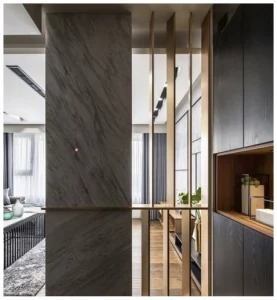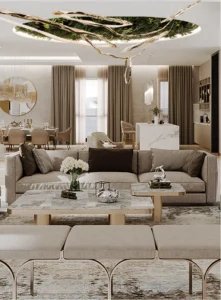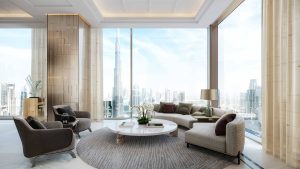Balancing Form And Function In Commercial Fit-Outs
2 min readCommercial fit-outs represent a delicate balance between aesthetic appeal and practical functionality. The successful fusion of form and function in these spaces is an art that requires thoughtful design, strategic planning, and a deep understanding of the unique requirements of businesses.
Optimizing layouts for efficiency:
Efficiency is a key component of functionality in commercial office fit out. The layout of the space must be optimized to facilitate smooth workflow and maximize productivity. This involves strategic placement of workstations, collaboration zones, and common areas to create a cohesive and efficient work environment.
Understanding business needs:
The journey to balance form and function starts with a thorough understanding of the business’s needs and objectives. Designers and fit-out professionals collaborate closely with clients to comprehend the nature of the business, its workflow, and the specific requirements of the space. This foundational understanding guides the subsequent design decisions.
Elevating aesthetics:
Aesthetic appeal is essential in creating a positive and inspiring work environment. The form of a commercial fit-out contributes to the overall ambiance and influences the perception of the brand. Design elements such as color schemes, furnishings, and architectural features are carefully chosen to align with the business’s identity and enhance the visual appeal of the space.
Flexible and adaptable design:
Commercial spaces are dynamic, and the design must accommodate changes and adaptations. Balancing form and function involves creating a flexible and adaptable design that can evolve with the business. This includes movable furniture, modular layouts, and multi-functional spaces that can be easily reconfigured to meet changing needs.
Branding integration:
Form and function converge when the design incorporates the brand identity seamlessly. Elements such as logos, colors, and brand messaging are integrated into the design, reinforcing the company’s image. This integration contributes to a cohesive and branded environment that resonates with both employees and clients.
Ergonomic considerations:
Prioritizing the well-being of employees is a practical consideration in commercial fit-outs. Ergonomic furniture, proper lighting, and thoughtful design contribute to the physical comfort of occupants. Balancing form and function involves creating an environment that not only looks appealing but also supports the health and productivity of those using the space.



